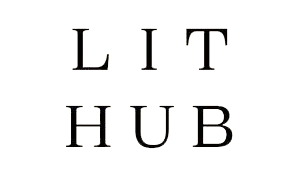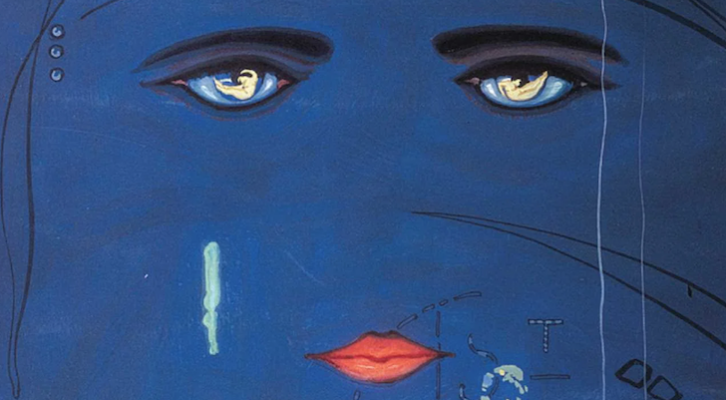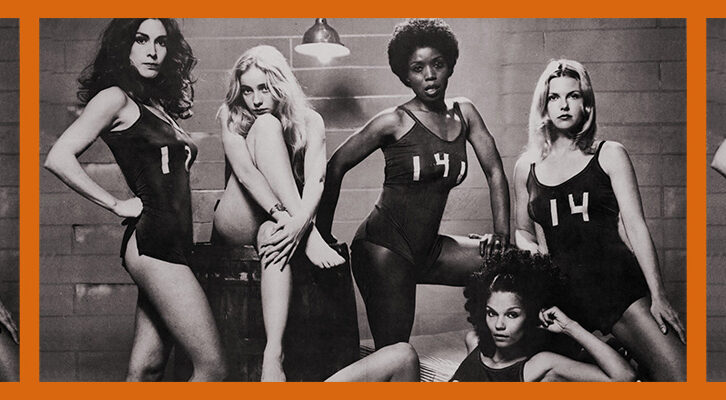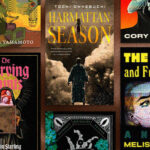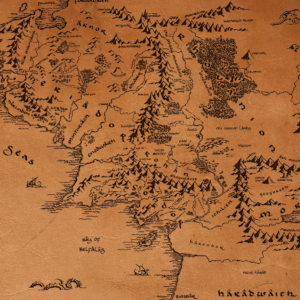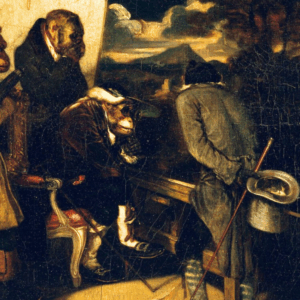
Our five-alarm fire of fabulous reviews includes Mark Chiusano on The Great Gatsby, Chelsea Leu on Laurent Binet’s Perspective(s), Casey Cep on Claire Hoffman’s Sister, Sinner, Spencer Strub on Diamaid MacCulloch’s Lower Than the Angels, and Becca Rothfeld on Ben Ratliff’s Run the Song.
Brought to you by Book Marks, Lit Hub’s home for book reviews.
*
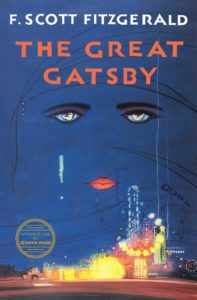
“In other ways, of course, the book that Fitzgerald at one point wanted to call Under the Red White and Blue feels fresh and cutting 100 years later, in this high-octane political moment. Gatsby is often attentive to the elected or jackbooted forces out there that can, at the ‘whim of an impersonal government,’ blow a citizen in one direction or another. There is the just-finished war that happened elsewhere, but also the powers of stocks and bonds, law and order, and American ambition that Fitzgerald knows have the strength to change the course of a partygoer’s life anywhere among the dark fields of this republic, whether in Mississippi, the Middle West, or Long Island.
…
“Clearly people like Tom, Daisy, and Jordan are still prominent among us, nasty American archetypes that we’ve never shed. As Nick sums up: ‘They smashed up things and creatures and then retreated back into their money or their vast carelessness.’ This is the world that Gatsby warns of: one with no solidarity, just avarice and pleasure-seeking. It is a cold and unsettled place, not one we’ll be proud to leave to our hypothetical children. I’m not sure we even have the tools anymore for a writer like Fitzgerald to chronicle this era, let alone narrate it. Perhaps that’s what sends us ceaselessly back to this book, boats against the current, etc., etc. It’s the best we have.”
–Mark Chiusano on F. Scott Fitzgerald’s The Great Gatsby (The Nation)
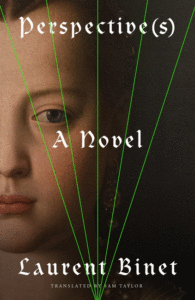
“In one of the more improbable moments in Perspective(s)—a novel filled with improbable moments—the 16th-century painter and author Giorgio Vasari uses the artistic technique of perspective to save his own life. Cornered by an assailant and armed with a crossbow, he sees lines appear in the air, ‘the laws of perspective taking shape before me, as clearly as if I had traced them myself with a ruler,’ and fires at the vanishing point—which happens to be right between his attacker’s eyes. Perspective(s) may be set during the Italian Renaissance, but its vision of the period is absurd, antic, slightly askew, steeped in art history and underpinned by an aficionado’s delight.
…
“Each letter comes across as a set piece, a small achievement of style and tone: Vasari’s flowery, deferential missives to the duke, Maria’s youthful ardor and confusion, the overly pious cattiness of a nun. And yet they’re almost too perfect. Over the course of the novel the correspondents remain largely frozen in static attitudes, emotionally unmoved by the events they’re caught up in. The novel dazzles with its cleverness but doesn’t seem much concerned with articulating a deeper message, and the result, as entertaining as it is, can feel slightly brittle.
…
“It’s striking that Binet sets his story not during the High Renaissance—when perspective was used to create astonishing works of realism—but in the period just afterward, when artists responded to their predecessors’ harmonious perfection by intentionally warping perspective. The Mannerists endeavored, as one painter writes in the novel, not just to imitate nature but to improve on it, ‘by rendering it more richly and with more variety.’ In other words, they wanted to transform reality into something livelier and more perfectly composed. Is it any wonder that Binet, with his impossibly colorful alternate histories, is a fan?”
–Chelsea Leu on Laurent Binet’s Perspective(s) (The New York Times Book Review)
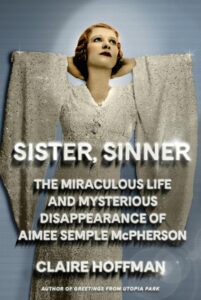
“With Sister, Sinner: The Miraculous Life and Mysterious Disappearance of Aimee Semple McPherson, Hoffman has written her own ballad, resurrecting much of the glory and tragedy of McPherson’s ministry, along with the origins of Pentecostalism and the early days of L.A. At the heart of every biography, though, lies a lacuna—something unknowable, no matter how candid or heavily documented the subject, no matter how familiar or diligent the biographer. There’s a kind of vanishing act in the story of any life, but part of what makes Sister, Sinner so gripping—and leaves its author so ambivalent about essential aspects of her subject’s character—is McPherson’s literal disappearance, the nature of which remains contested to this day.
…
“Years of investigation and interrogation failed to definitively solve the mystery of McPherson’s vanishing. Her church is now even deeper in the heart of the city, which continues to sprawl around it, and plenty of people worldwide still identify as Foursquare Christians. But she made no confession before she died—in the fall of 1944, of an apparently accidental overdose of sleeping pills—and she doesn’t seem to have availed herself of the afterlife to clarify what happened in Carmel-by-the-Sea, or anywhere else. If she had, Claire Hoffman would surely have found out. Her book is wonderfully thorough, the type of biography in which you learn just the right amount about everything, from the idiosyncrasies of American religious history to the idiocy of modern celebrity culture.
…
“Before turning to books, Hoffman profiled the likes of Prince, Amy Winehouse, Jane Fonda, and Michael Jackson for this magazine, Rolling Stone, and the Los Angeles Times, so it’s unsurprising that she brings the lens of celebrity to her account of McPherson’s life. In this version, the controversial evangelist is somewhere between tragic feminist icon and pioneering proto-influencer—a kind of Kabbalah Kardashian or St. Taylor Swift … But deflecting questions about McPherson’s disappearance by blaming her celebrity status and the toxic scrutiny that accompanied it is just another way that fame obscures the person it elevates. If there is a flaw in Hoffman’s book, it is that she suspends disbelief beyond belief about the central episode of the evangelist’s career, sidestepping some of the most tantalizing aspects of McPherson’s life. If you never resolve the matter of whether she lied, you never get to ask why she might have done so, and then kept doing so for decades.”
–Casey Cep on Claire Hoffman’s Sister, Sinner: The Miraculous Life and Mysterious Disappearance of Aimee Semple McPherson (The New Yorker)
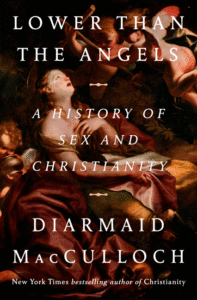
“Christians today might disagree on any number of questions around gender and sexuality: Can women be members of the clergy? Can same-sex couples marry? Is reproductive choice a right? Is contraception a sin? Does gender transition affirm divine truth or does it transgress a God-given binary? But as Diarmaid MacCulloch explains in Lower Than the Angels, his magisterial new history of the many different Christian attitudes toward sex, these preoccupations define only the past half-century of the faith. For the previous 1,900 years or so, the most important question was this: Is it sinful to get married and have kids?
“Lower Than the Angels sometimes veers into passages only a specialist could love, but this arcana is well balanced by MacCulloch’s dry wit and flair for narrative sweep. Recapping the millenniums-long debate over the unholiness of wedlock, MacCulloch—a distinguished scholar of the English Reformation, an author of award-winning books onchurch history and the son of an Anglican clergyman—lines up opposing columns of sex-positive and sex-averse Christian philosophers.
…
“The author clearly sympathizes with reformers like Luther and the 17th-century bishop Jeremy Taylor, who described his children as ‘so many little emanations of joy,’ so it makes sense that Lower Than the Angels understates celibacy’s appeal, both spiritual—medieval accounts of tasting Christ’s foreskin or suckling at Christ’s breasts attest to a remarkable capacity to transfigure bodily urges into devout yearning—and practical: The danger of childbirth alone was good reason to prefer the cloister to marriage.
…
“Lower Than the Angels addresses a global Christianity increasingly rived by fierce disagreements over sex and gender. MacCulloch’s hope is that a dose of careful history might lower the temperature of those fights. The chronicles of Christian sexuality are full of discord, accommodation and reinvention. While undeniably punctuated by violence and persecution, the many turns in these religious thoughts and deeds inevitably undermine the cruelest certainties of the present. As MacCulloch writes, ‘knowledge is like a medicine to soothe a fever.’ Sadly, though, medicine only works if you’re willing to take it.”
–Spencer Strub on Diamaid MacCulloch’s Lower Than the Angels: A History of Sex and Christianity (The New York Times Book Review)
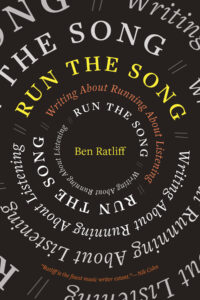
“It is only natural, then, that he combines the complementary pleasures of running and listening in an ecstatic and eccentric blend of criticism, music, autobiography and philosophy that is knowingly caught between genres. Run the Song is not an argument in favor of listening to music while running, nor is it exactly a personal chronicle. Perhaps it is best characterized as a work of phenomenology, an attempt to capture what running while listening to music is like.
…
“He writes, too, in circles, and the form of his book matches the form of his thinking, which in turn matches the form of his running, which in turn matches the form of his listening. The result is as looping and leisurely as a satisfying jog in the park. Run the Song is a peripatetic text that moves nimbly from one musician to another, sometimes coiling back and sometimes darting forward, sometimes speeding up and sometimes slowing down, occasionally pausing for asides about Oscar Wilde or the history of headphones.
…
“Run the Song is both a formal and a substantive meditation on the ways the personal and the impersonal intersect in the act of aesthetic evaluation, that is, the act of criticism. ‘When one runs,’ Ratliff writes, ‘it is possible to feel within oneself to an extreme: as you are in motion, raising your heart rate, you rediscover the unity of your own body and its particulars—your own head, neck, shoulders, elbows, forearms, hips, thighs, calves, feet. If you run while listening to music, it is also possible to get outside of yourself and imagine yourself in collaboration with another, if only the musician whom you are listening to.’
If we are lucky, it is in these moments, when we are both outside and inside ourselves in the face of a work of art, that we forget that it ever has to end. Fittingly, Run the Song refuses to come to a close: It cuts off in the middle of a DJ set, which Ratliff turns off before it is over. Here, in the ‘ongoing middle,’ in the fantasy of suspension, he is treated to a small sample of eternity.”
–Becca Rothfeld on Ben Ratliff’s Run the Song: Writing About Running About Listening (The Washington Post)








